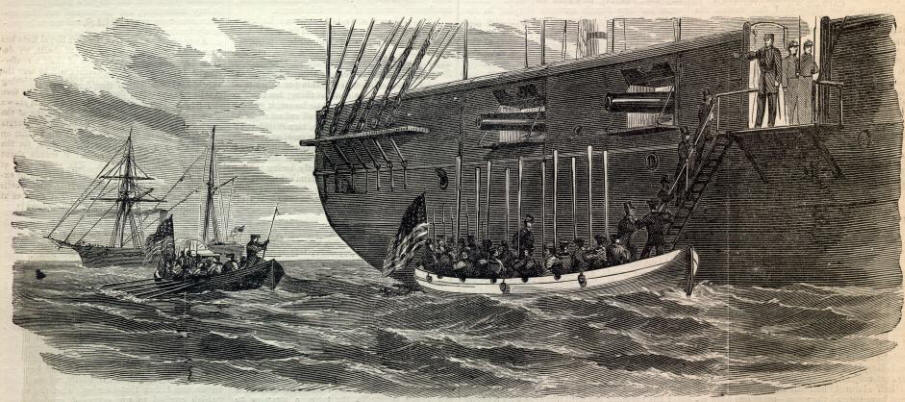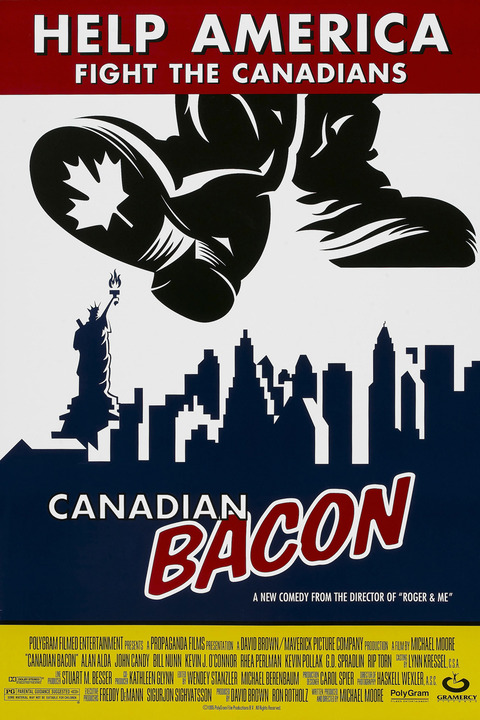Remember, before you read this, you should read Part 1 to know how we got here!
How The Second Anglo-American War Would Go
How The Second Anglo-American War Would Go
Before I can get into the actual scenario,
I’m going to have to give you some numbers, mostly in soldiers, airplanes and
the like. These numbers are really
hypothetical, and assume that there was a moderate buildup of both nations in
the two years between the Coup in 1934 and the outbreak of war in 1936. In any
case, the numbers could be much lower or possibly even higher than in any
scenario. But I feel it’s important to mention them, as these are the number’s
I’m using for this article.
 |
| Because I can't just show this map and call it a day. Sigh. |
To start, Canada. In 1938, Canada had
roughly 11 million citizens. The pre-World War Two military of Canada was
shockingly small: the Permanent Active Militia, the so-called “Permanent Force”
only had 4,169 officers and men. The Non-Permanent Active Militia had 51,418
officers and men, but this was more or less a reserve force. Even combining
them, Canada would only have about 55,500 somewhat trained troops.
But since there is a build up, let’s say
the number of men raised into the army, most likely on a volunteer basis, would
be three times that number, so up to 150,000 men in Canada would be in uniform.
But that 55,500 of the Permanent and Non-Permanent force would be the core of
this newer army, which would be divided in Five “Commands”: Pacific (British
Columbia); Prairie (Alberta, Saskatchewan, Manitoba), Ontario; Quebec; and
Maritime (Nova Scotia, New Brunswick and Prince Edward Island). Newfoundland
was not a part of Canada at this point, and was actually still technically a
British Colony after a failed attempt at Dominion status.
The Royal Canadian Navy was in even worse
shape, with 309 officers, 2,967 ratings, and only 7 ships in 1939. While the
RCN would become the third largest Allied Navy by the end of World War Two,
this was only because Canada was safe from direct attack, so I believe the
majority of the naval war would be between the Royal Navy and the US Navy. The
Royal Canadian Air Force had 360 officers and 2,797 airmen, and while they had
about 11 permanent squadrons, there was only 29 fighter and bomber aircraft in
1939 when the Second World War broke out. But with some build up, maybe there
would be 200 operation aircraft ready by 1936, if given about two years to
build up.
 |
| Accurate description of the Canadian Army even today! |
The US is a totally different matter. In
the census of 1930, the US had a population over 10 times that of Canada,
123,202,660, so for 1936, I think the US could have close to 128 million
people. The Army, as outlined in the National Defence Act of the 1920, could
have had 296,000 men, but Congress reduced that number over the years, and the
Army never recruited that many men. The National Guard also never reached it’s
authorized 486,000 men, and as the Great Depression hit, less and less money
would be spent. The US Army Air Force also suffered, as by 1936 it only had 855
aircraft, when it had been suggested over 2,300 should be built.
The US Navy is, perhaps, the most prepared
military force the US has in this period, and even after the 1921 Washington
Naval Conference, it was assumed that the US and Royal Navy would have 1:1
capital ship ratio, with . However, by 1933 the US Navy had 372 ships,
displacing 1,038,660 tons. But in 1934, the “Vinson-Trammel Act” was passed,
allowing the navy to not only build enough ships to reach the tonnage limits of
the Washington Naval Conference, but also replace older, derelict ships. I have
a feeling that the ships built under this law would not be ready in time.
However, the US Navy would still be a match for the Royal Navy, which War Plan
Red expected to be able to send 14 battleships, 38 cruisers, 5 aircraft
carriers, 130 destroyers and 34 submarines to Halifax within a few weeks of the
outbreak of war. The US Navy would also have to split between two oceans, and
ensure that a strong enough force remained in the Pacific in the event a
Japanese intervention, which was considered a highly probable event.
 |
| The US Army: even they can't plan things right. |
But let’s say that in 1934, after the
Business Plot succeeds, money to the Army and Army Air Force is freed up, and
not only full recruitment is achieved, but it doubles. The US Army in this alternate 1936 could have
close to 600,000 men, with over 400,000 men in the National Guard kept behind
for national defence. But only a part of this new massive force can be used to
invade Canada: troops have to be kept on the Mexican border and possible
landings by the British on each coast, so about 400,000 troops would be
available right at the start of the war. For this scenario, the number of
aircraft would be about the recommended 2,320 aircraft, as there wouldn’t be
enough time to build much more than that. The US Navy, already pretty large,
would most likely only get a few more ships before the war, and even then we
are talking some submarines and destroyers.
Events
of the War
It’s May 1936. Tensions between the US and
the UK (and Canada) are at an all time high. American and Canadian military
build up has turned the longest undefended border in the world into 5,500
miles, or 8,900 km, of barbed wire, concrete pillboxes and fortifications.
Airbases on both sides are being improved to support any possible invasion.
Factories are turning out weapons, tanks, airplanes and artillery to support
both sides growing military forces, which, incidentally, raised both nations
out of the Great Depression.
In Ottawa, Chief of the General Staff Andrew
McNaughton is nervous. He was the one who canceled Defence Scheme No. 1, put
together by Lieutenant Colonel James "Buster" Sutherland Brown, a “fantastic
desperate plan [which] just might have worked.” General McNaughton knew Canada,
despite a couple years of military improvement, would be no match to the bigger
US Army. But maybe, if Buster’s crazy plan works, Canada could be given enough
time to hold the line…
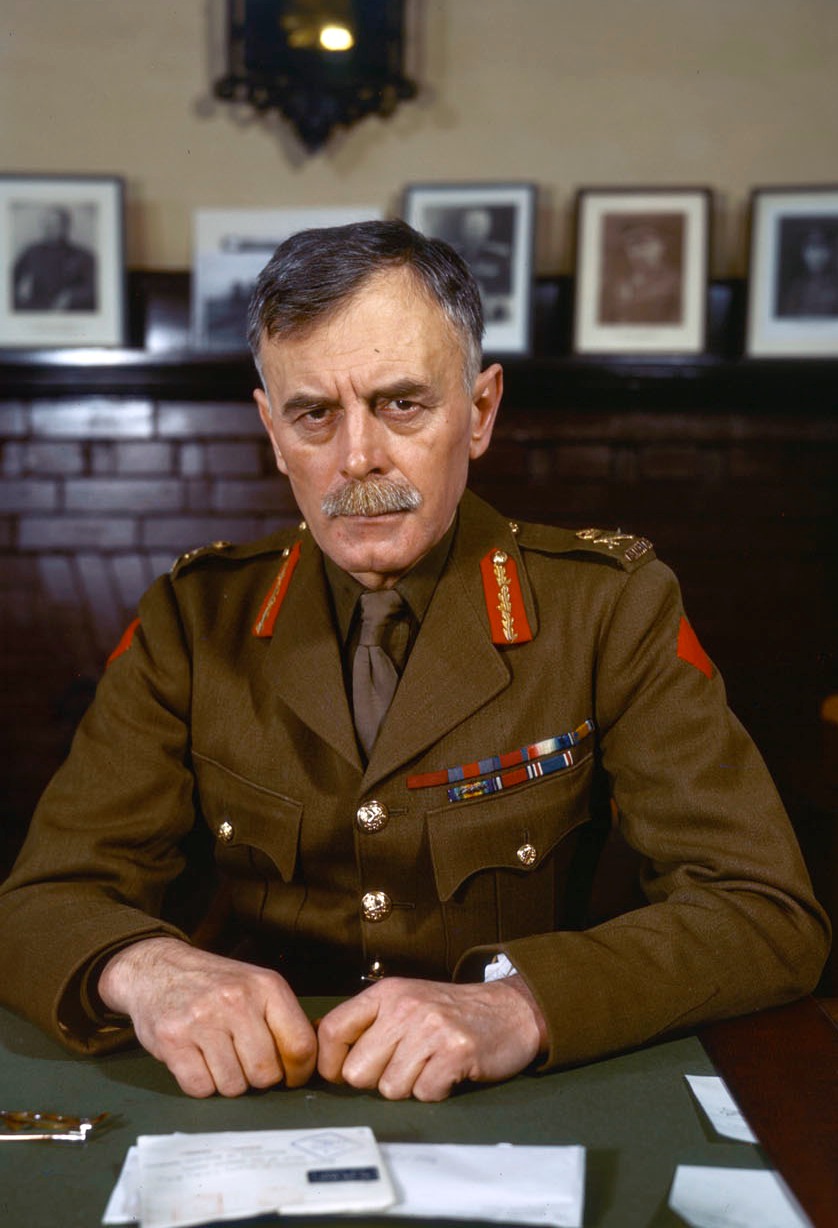 |
| General Andrew McNaughton... look at that totally moustache! You are totally dealing with a British soldier here! |
May 28, 1936: American troops are seen
moving to the border by agents in the US. Aerial reconnaissance flights have
increased, and rumors that the US Envoy Extraordinary and Minister
Plenipotentiary (basically, but not quite, US Ambassador to Canada) has been
ordered to burn his documents and prepare to return home. In fact, Douglas
McArthur is preparing the Declaration of War, to be issued June 4, to coincide
with the start of the war.
General McNaughton has a secret meeting
with Prime Minister William Lyon Mackenzie King that day. With the fateful
words “It’s now or never,” Defence Scheme No. 1 is to be put into effect in 48
hours. King prepares a declaration of War on the US.
May 30, 1936: In a hastily called, late
night session of Parliament, PM King presents evidence of US interference in
Canada, citing reports of large troop movements and fly overs by airplanes.
While some of the reports are unclear and sensationalized, the majority Liberal
Parliament votes in favor of a Declaration of War, which is broadcast over the
CBC and telegraph networks across the country at 9:34 PM.
 |
| Though I'm sure Mackenzie King only did that after consulting the spirits of Leonardo da Vinci and his mother... |
With Canada having declared war, Defence
Scheme No. 1 is put into effect. Under the cover of darkness, Canadian troops
slip through the border and race south in armored cars, horses and light tanks.
Due to the length of the front and difficulty to hold the entire border,
Canadian units are able to slip by mostly unnoticed. American troops are still
being readied for the attack on Canada according to War Plan Red, and are
currently still being mustered. The Dominion uses this to their advantage.
A five-point attack took place: Canadian
“Flying Columns,” made up of the best troops of the Permanent Active Militia,
would be used. In the far west, troops from British Columbia would capture
Seattle and Spokane, Washington and Portland, Oregon. In Manitoba and Alberta,
the target was Fargo, North Dakota and Great Falls, Montana, and then south to
Minneapolis, Minnesota. Soldiers in Quebec would rush south to capture Albany,
New York, and the troops in the Maritimes would march in to occupy as much of
Maine as possible. Troops in Ontario Command attack Detroit and Niagara.
 |
| Plan for the Eastern Front |
 |
| Plan for the Central Front |
 |
| Plan for the Western Front |
The goal here wasn’t to take over these
cities, but throw the Americans off balance, and when resistance becomes strong
enough, Canadian troops would retreat: blowing up bridges, destroying train
tracks, cutting telegraph and phones lines, and otherwise inflicting damages to
the US infrastructure that would be needed to invade Canada.
And at first, it was a stunning success.
Seattle, Great Falls, Fargo, Detroit and upper New York State are thrown in
disarray as Canadian troops, each not much stronger than 5,000 men each,
suddenly appear, blow up bridges, and disappear before American troops arrive.
However, beyond these initial targets, the Canadians soon run into hastily
raised civilian units, National Guard troops and small detachments of the US
Army, and heavy fighting takes place over the next three to four days, before
Canadian troops begin to pull back to the border, destroying bridges, railroads
and other important infrastructure. The biggest blow was the destruction of
Ford and General Motor’s factories in Detroit, both of which had been producing
war materials in the past two years.
 |
| The red lines on each map show as far as the Canadian troops advanced into the US before they start to pull back. As you can see, not all goals were reached, but surprised was achieved. |
June 1, 1936: Confusion in Washington,
D.C., of what is going on along the border and the late night declaration of
war by Canada, leads President McArthur to immediately issue the declaration of
war on the British Empire, and War Plan Red is put into effect immediately,
though troops are not fully prepared, and most military commanders are now
trying to track down the Canadians that had invaded America. In the few battles
that are engaged, the Canadians hold their ground, but retreat before enough
American troops are brought to the front. But panic in the northern states,
false alarms of Canadian troops and the cutting of railroads, telegraphs and
telephones result in confusion.
While the rest of the world is waking up to
news of the declaration of war on the US by Canada, the US Army Air Force
begins their strategic bombing campaign. B-10 medium bombers and the first of
the B-17 “Flying Fortress’s” visit Toronto, Montreal, Quebec City, Winnipeg and
Vancouver, causing massive destruction. But in the most shocking move, and the
one that completely changed global opinion, US bombers attacking the city of
Halifax, the most important port on the Canadian East coast, also drop chemical
weapons, as per War Plan Red. Phosgene and Mustard gas cause thousands of
casualties among the civilians and military personal in Halifax, killing many.
 |
| Way to go Tyler, you just made this article horribly depressing. |
June 4, 1936: The news of the chemical
weapons attack on Halifax completely changes world opinion. While many were at
first angry at Canada’s declaration of war, the use of Chemical weapons so
quickly revealed that the US was planning on starting war anyway. The United
Kingdom, at first planning on leaving Canada to its fate due to the perceived
impossibility of holding Canada, is now planning all possible measures to
retaliate, preparing a massive fleet to be send to Canada to attack the US.
In America, the news of the use of chemical
weapons is suppressed, instead focusing on the trumped up “Canadian Atrocities”
taking place south of the border. By this point, all Canadian troops that had
been in the US had retreated back to Canada. With major railways, bridges and
communications destroyed, the land invasion section of War Plan Red gets off to
a slow start.
The US plan was an eerie mirror of Defence
Scheme No. 1. In the west, a Naval attack and land offensive to attack
Vancouver, the major port on the Pacific, with bases in Bellingham, Washington.
Troops stationed in Grand Forks, North Dakota, would march north to take
Winnipeg, the lynchpin of both of Canada’s trans-continental railroads. Detroit
would be the base to march through the Niagara Peninsula and take Toronto and
the industrial heart land of Canada, with troops from Buffalo, New York, taking
out hydro-electric power plants and then joining the drive to Toronto. Troops
in New England and New York State would rush north to invade Montreal and
Quebec City. Quebec City in this scenario is the most important target, as it
would be the only major port left to Canada with the neutralization of Halifax,
which would be taken by a naval and amphibious assault.
 |
| War Plan Red in the East |
 |
| War Plan Red in... well, to take Winnipeg. |
 |
| War Plan Red... okay, are you really even trying over in BC? |
Rest of June, 1936: The destruction of
bridges and rail lines caused major delays in the implementation of War Plan
Red, especially with heroic Canadian defence on the northern side of many
rivers and crossings where bridges had been destroyed. A small US foothold in
Windsor and Niagara Falls is destroyed after days of heavy fighting. US Troops
quickly reach the St. Lawrence River, but the lack of bridges, the few Royal
Navy and Royal Canadian Navy ships not in Halifax, and a tenacious defence on
the north side of the river keep Americans from crossing.
Winnipeg and the Prairies has been the
biggest success for the US, and even then it has been slow, tough slog amongst
tenacious Canadian soldiers and civilians with guns that volunteer to defend
their homeland. Trench warfare in the Red River Valley is a bloody, deadly
undertaking. But the wide open prairies allow flanking maneuvers, and with the
advantage in manpower, the US is able to wrap around Canadian troops, forcing
them back time and time again. As the US keeps pushing north to Winnipeg,
Canadians retreat and destroy anything of value, severally hampers efforts to
supply the US army. Vancouver and Victoria is taken, but retreating Canadian and British
troops and ships destroy the harbor, reducing the cities usefulness. Marines
and ships from Boston also capture Halifax, but the civilian uprising against
the Americans inflicts hundreds of casualties, and Halifax remains a major
sticking point in the US occupation.
 |
| Well, at least those goals were attainable. |
Prime Minister King institutes
Conscription, which, unlike in 1917, is not seriously opposed by French
Canadians in Quebec, who are now fighting to protect their homeland. Thousands
flock to join the embattled Canadian Army, as American atrocities such as the chemical
bombing of Halifax are widely publicized. In a few weeks, Canada will have
close to 500,000[1]
men and women, though equipment and training is lacking. While the Canadian
military wants to use chemical weapons against the US in retaliation for
Halifax, there is no Canadian stockpiles, and the British hold most of the
empire’s poison gas capabilities. When the Americans try to attack Windsor
again, artillerymen use poison gas shells to stop the attack across the river,
bringing chemical weapons back to the trenches.
Winston Churchill is made the First Sea
Lord of the Admiralty, despite his American roots and support for the US.
However, his love of the British Empire is stronger, and he sets to work on how
to win this war. The first Royal Navy ships, RAF squadrons and British soldiers
arrive in Quebec City and Montreal, and engage in battle to hold the city from
American attack.
The RAF and RN, based in Toronto and Bermuda respectively, launch bombardments and air attacks on New York City and Washington, D.C., causing serious, damage to the unprepared American defenders, and the British ships sail away before the US can respond. The Capitol Building and White House are destroyed in the bombing, though General Douglas McArthur was not in Washington at the time. As more and more bombing strikes are launched, the cost in planes, including one flying into the Empire State Building after being damaged, is high, and by the end of the month the RAF suspends further bombing runs on major cities, instead focusing on railway junction points and other manufacturing centers. American bombers continue to pound Canadian targets: Montreal, Quebec City, Winnipeg and Toronto have been hit the hardest.
The RAF and RN, based in Toronto and Bermuda respectively, launch bombardments and air attacks on New York City and Washington, D.C., causing serious, damage to the unprepared American defenders, and the British ships sail away before the US can respond. The Capitol Building and White House are destroyed in the bombing, though General Douglas McArthur was not in Washington at the time. As more and more bombing strikes are launched, the cost in planes, including one flying into the Empire State Building after being damaged, is high, and by the end of the month the RAF suspends further bombing runs on major cities, instead focusing on railway junction points and other manufacturing centers. American bombers continue to pound Canadian targets: Montreal, Quebec City, Winnipeg and Toronto have been hit the hardest.
July-August 1936: Winnipeg is finally
captured, but the cost in lives has been extensive. With the “keystone” of the
Canadian Pacific and the Canadian National Railways in US hands, Canada is, for
all intents and purposed, divided in two. However, the will of Canada to resist
the attack isn’t faltering yet, though morale is starting to be sapped. With
the small industrial base of Canada under siege, and the source of raw
materials in the west in danger, it’s hard to see how Canada could last much
longer.
 |
| Well... that was straightforward. |
American troops finally push into the
Niagara Peninsula in a daring attack north and south of Windsor, surrounding
the city and forcing the Canadians to surrender. However, Canadian and British
troops are able to inflict another trench warfare on the US, complete with
poison gas artillery. With four years of experience in this kind of warfare,
the British/Canadians make this costly to the US. Montreal and Quebec City remain out of reach, and Halifax is boiling over in revolt.
 |
| The furthest the US get in Canada in this scenario. |
The rising casualties, unachieved targets,
and the difficulty of supplying five separate armies over inhospitable terrain
and broken railways and hastily repaired bridges across a 5000 mile front are
starting to wear at the US. While there was a wave of volunteers at the start
of the War, which raises the number of troops the US has closer to 2 million
troops, it’s difficult to see that what should have been a “simple matter of
marching” is going to end.
British and Imperial troops are starting to
arrive en-masse in the east. Australia and New Zealand re-establish the ANZAC Corps, and
raised 150,000 men together to serve their ally. Plans to transport a quarter
of a million Indian troops to Canada are also drawn up, but this would be
nearly impossible until the US Navy in the Pacific is neutralized. So these forces engage in smaller attacks, including hit and run raids on American targets in the Pacific, such as Guam and the Philippines.
While most ships of the US Navy are on the
East Coast, enough ships are in the Pacific to make sending convoys of Imperial
troops a risky proposition. The Royal Navy launches an attack to either capture
or destroy the Panama Canal, but the force is beaten back with heavy
casualties, but it was able to destroy the locks on the Atlantic side of the
canal, which immediately cripples the ability of the US to reinforce, or ship
goods cheaply from either coast.
 |
| To remind you how important the Panama Canal is for being a ditch dug through Central America... |
The Royal Navy and the USN also engage in a
huge cat and mouse chase through the Atlantic, each seeking the best
opportunity to destroy the other fleet, while avoiding a battle with a superior
force. In an ironic move, US submarines engage in sinking British ships at
will, a pseudo-blockade of Britain that causes severe damage to the British
economy. This nearly unrestricted submarine warfare was what exactly brought
the US into World War One, but on Britain’s side against Germany.
September-October 1936: With the battle on
land and sea more or less stalemated, the US and British/Canadian forces
reinforce and mobilize their forces. Large numbers of troops from the UK
arrive, which on top of steadily growing Canadian forces, brings the
British/Canadians to at least 1.4 million troops. An offensive to recapture
Winnipeg bogs down, but American plans to remove troops from Manitoba to
reinforce the attack on Toronto are now put on hold, further straining American
resources.
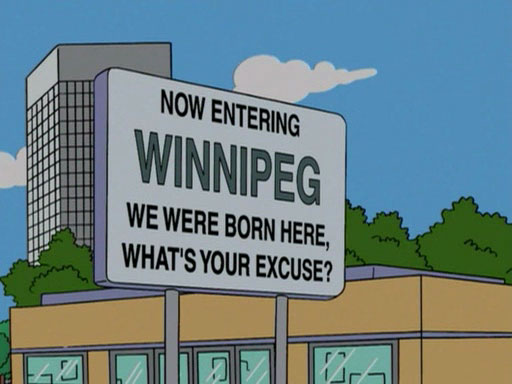 |
| Because, well, who really wants Winnipeg? |
The US brings in the draft again, but the
unpopular move, and memories of World War One, leads to increasing dissent.
News that the US had first used chemical weapons, long suppressed, finally
breaks out. Riots in cities are brutally put down, and military officers who
just a few months before were willing to invade Canada, are now having second
thoughts.
President McArthur realizes that things are
not going well: the US Army bit off more than it could chew, the Canadians had
more experience in fighting trench warfare, and the Royal Navy and RAF had been
inflicting major attacks. An aircraft carrier attack in the Gulf of Mexico was
launched on Texas oilfields, and though the damage was small due to the
inferior British planes, this panicked people in Texas.
McArthur decides on a desperate gamble. The
US Navy is ordered to muster battleships, aircraft carriers, and other ships
and sail to the British coast. No invasion was planned, but he thought the
simple fact that American ships arrived off Plymouth or Southampton should be
enough to convince the British to surrender.
 |
| Apparently completely forgetting about this man. |
Winston Churchill, thanks to intelligence
from Canadian and American sources and the efforts by British cryptologists to
break the US codes, learns of this plan, and orders ships all over the Atlantic
to hunt down and destroy this fleet.
Three hundred miles south west of the coast
of Ireland, the US fleet and the Royal Navy meet, and a great battle begins.
American technology versus British training and tradition takes place. Dozens
of ships are hit; the HMS Hood and Ark Royal are destroyed, as are ships
like the USS Arizona, Utah, Yorkton and
Enterprise. US carrier planes like the
Grumman F2F and the TBD Devastator clashed with RN Swordfish torpedo bombers,
and while they all preformed excellently, in the end the USN received the brunt
of attacks, and was forced to fall back, sailing back to North America with the
British fleet on their tails. Stragglers were sunk, and the last, war winning
effort failed.
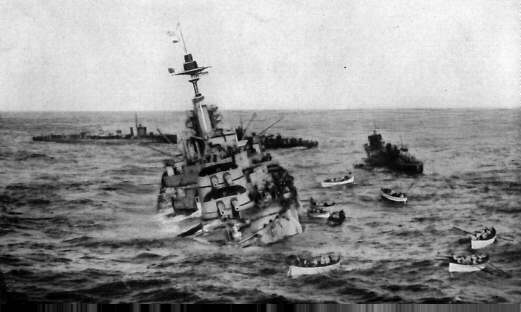 |
| There is nothing as epic and sad at the same time as a sinking battleship... |
When news of the loss in the Battle of the
Celtic Sea reached Washington, and the news that Japan was threatening to join
the war, a coup lead by General Dwight Eisenhower forces Douglas McArthur from
office, and Franklin Delano Roosevelt, held under “house arrest” in
Georgia, is declared President of the US again, and he immediately sues for
peace.
General McNaughton, in private conversation
years later, would state: “I almost wish the Second Anglo-American War lasted a
few months longer. One winter in Canada, and the Americans would never come
again.”
Aftermath
The Peace Deal between the US and the
UK/Canada wouldn’t solve a whole lot. The US agreed to pay war reparations, and
General McArthur and the men that planned War Plan Red were declared war
criminals, but they were never tried. McArthur and a huge chunk of the military
structure were forced into retirement. The US military was demobilized, and the
Great Depression once again came into effect without the military build up. The
US Navy was forced to hand over many of its battleships and carriers, severely
damaging US power at home and abroad. No borders were changed, however.
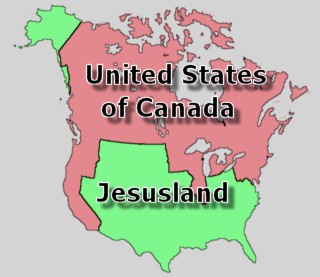 |
| Yeah... no. This isn't happening. |
Canada paid the largest cost, in lives and
damages, for the war, but it was recognized that Defence Scheme No. 1 possibly
saved Canada from being quickly over run by the US. Many nations around the world
looked into possibly creating their own versions, and later when Nazi Germany
threatened war on Czechoslovakia, the smaller nation attacked Germany before
hand, throwing most of Hitler’s plans into chaos and leading to his overthrow.
In the long run, I think this war would
really only lead to more tensions between the US, Canada, and the UK. The
US/Canadian border would become as defended as any border around the world, and
the trade and diplomatic relationship that the US and Canada have today would be
nearly impossible. The US defeat in this relatively short war would most likely
only lead to another, future war, where the US would be much stronger. But so
long as Canada maintained it’s alliance with the UK and other, larger powers,
it’s hard to see if the US would ever occupy Canada in this ATL.
Probability/Conclusion
I’ll be honest, I skimmed over a lot, did a
bit of wishful thinking, and a few lucky moves. In general, this scenario feels
both plausible and ridiculous at the same time. I feel there would need to be
more of a build up to war than what happened, a longer, more tense relationship
between the US and UK/Canada. If anything, this “Second Anglo-American War”
could have dragged on for years, a naval and land war that could last for a
very long time until one side finally gives up. Of course, I don’t want to go
on forever with this idea.
 |
| Because it could look something like this. |
The two greatest English speaking nations
of the world had great relations from the end of the Civil War to the present,
despite some difficulties. So much would have to be changed in order for this
to work. However, surprises do happen. I’m sure in the Pentagon there is a plan
for a US invasion of Canada, and in Ottawa there is a plan to deal with a
possible US invasion. You know, just in case.
However, I feel that if War Plan Red was
put into effect without that preparation, then Canada could have won the war
even easier than in this scenario, Defence Scheme No. 1 or not. The US Army was
just not prepared before the wakeup call that was Pearl Harbor. They didn’t
recruit the number of troops there were allowed to by budgets, they cut
training and equipment, and as the early American engagements in World War Two
showed, the leadership just wasn’t there. And with five different targets, plus
the plan to use chemical weapons at the start of the war, I don’t see how
global reactions to the US would be anything other than hostile. However, should this plan have been put in place any time after World War Two, it's hard to see how Canada would have had a chance to survive such an attack, so the 1930s would have possibly been the last time that Canada and the UK could have fought the US and possibly have won.
That said, I presented Defence Scheme No. 1
in a very positive light here. With just over 4,000 active troops, I see little
way that a hastily called up Canadian Permanent Active Militia force would have
been able to engage in five raids into the US. In the original plan, the
Canadian troops were to make it as far as Minneapolis/St. Paul, which I felt
was very ambitious, and possibly dangerous. But these were more or less raids:
they wouldn’t be going in to occupy, they were going to attack and damage major
infrastructure the US would need to invade Canada.
 |
| This one bridge, the Ambassador Bridge between Detroit and Windsor, carry's 25% of the cross-border trade. So... you do the math. |
But both plans also show one very major
thing about such a possible war: due to the size of the common border, you
can’t just invade one part, say Ontario, or the entire thing all at once. You
need to attack the major points in Canada’s transportation network, such as
Halifax and Winnipeg in order to even have a possibility of a successful invasion.
I think Winnipeg and Halifax are the two major points: Halifax has, perhaps,
the best harbor on the eastern coast of North America, and Winnipeg was the
center of the continent, and where railways have to go through. Holding those
two points would make reinforcement from England nearly impossible, and cripple
Canada’s economy east to west.
But what is the chance both plans would
have been used in the time frame they were made?
I feel that answer is somewhere between “a
hypothetical possibility” and “frighteningly likely.”
 |
| Hey! We deserve at least two maple leafs, damnit! |
[1] Canada raised a total of one million soldiers for World War 2, so I
feel that 500,00 isn’t that far fetched at this point.




